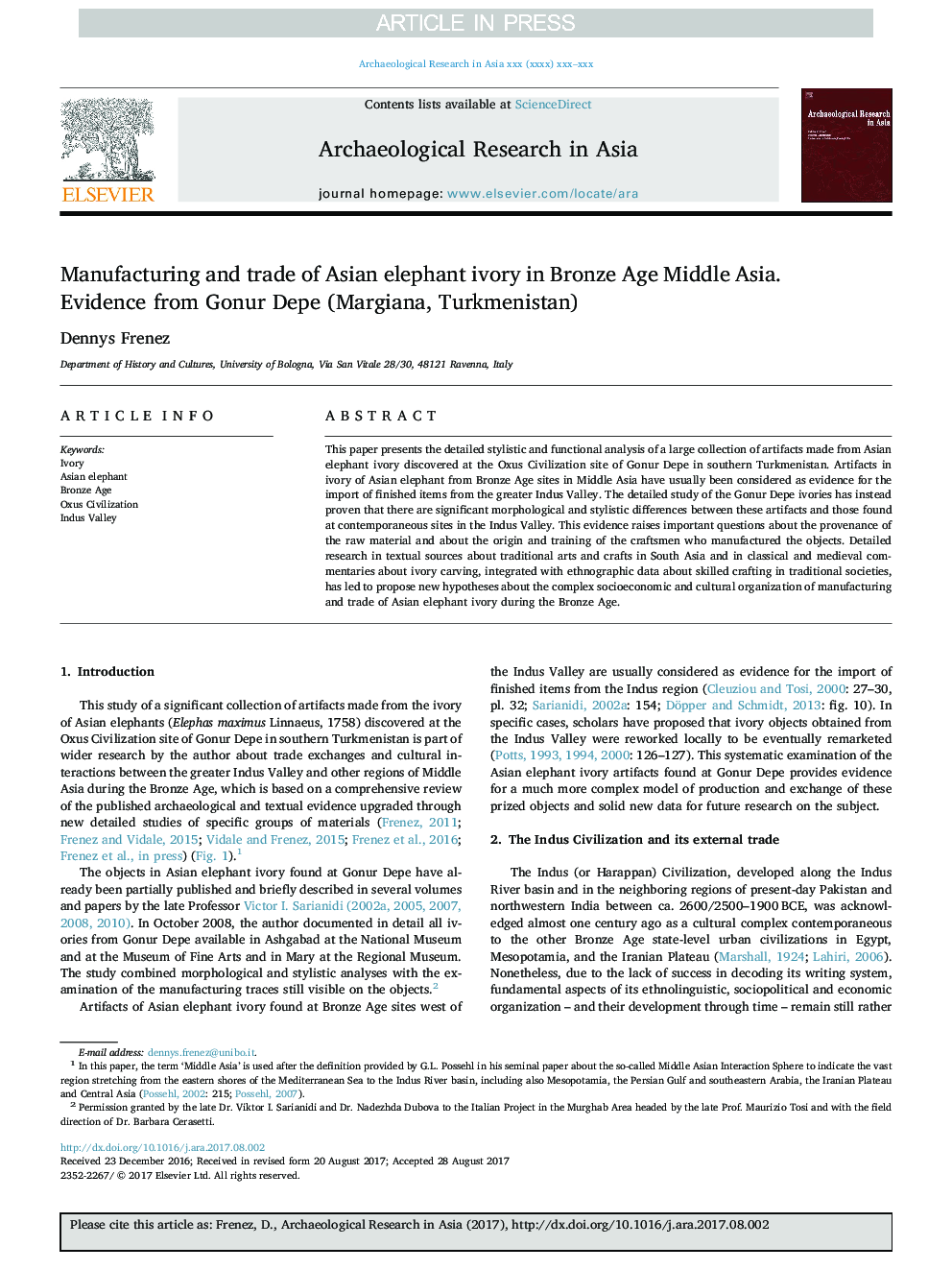| Article ID | Journal | Published Year | Pages | File Type |
|---|---|---|---|---|
| 8942492 | Archaeological Research in Asia | 2018 | 21 Pages |
Abstract
This paper presents the detailed stylistic and functional analysis of a large collection of artifacts made from Asian elephant ivory discovered at the Oxus Civilization site of Gonur Depe in southern Turkmenistan. Artifacts in ivory of Asian elephant from Bronze Age sites in Middle Asia have usually been considered as evidence for the import of finished items from the greater Indus Valley. The detailed study of the Gonur Depe ivories has instead proven that there are significant morphological and stylistic differences between these artifacts and those found at contemporaneous sites in the Indus Valley. This evidence raises important questions about the provenance of the raw material and about the origin and training of the craftsmen who manufactured the objects. Detailed research in textual sources about traditional arts and crafts in South Asia and in classical and medieval commentaries about ivory carving, integrated with ethnographic data about skilled crafting in traditional societies, has led to propose new hypotheses about the complex socioeconomic and cultural organization of manufacturing and trade of Asian elephant ivory during the Bronze Age.
Keywords
Related Topics
Social Sciences and Humanities
Arts and Humanities
History
Authors
Dennys Frenez,
